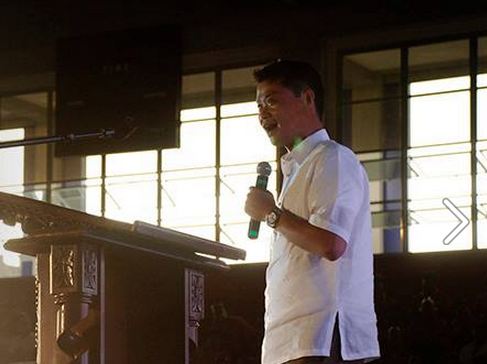
MANILA — Valenzuela City Rep. Win Gatchalian on Monday said the Department of Social Welfare and Development (DSWD) should subsidize education of street children in its Modified Conditional Cash Transfer Program (MCCTP).
He said the call for investigation by his colleagues should be used by DSWD Sec. Dinky Soliman to explain her noble program in connection with its hauling off more than 900 street children and homeless people to detention centers and beach resorts during the recent visit of Pope Francis.
Gatchalian, senior vice chair of the House committee for Metro Manila development, said he will ask Soliman if the MCCTP includes funding for the education of homeless children aged 5 to 17 years old.
“My primary concern here is the education of homeless children who sleep on the streets and along river banks. Does the DSWD have a program that enables street children to get the education they deserve in our public schools?” said Gatchalian, who is a leading member of the Nationalist Peoples Coalition (NPC).
The secretary had said that under the modified CCT, the government aims to keep families off the streets by training them on how to live in a house. In Metro Manila, a total of 2,479 families have been under the program since 2012.
The DSWD’s “Pantawid Pamilyang Pilipino Program or Conditional Cash Transfer” (CCT) annual budget amounts to Php64.7-billion. The CCT program provides conditional cash grants to extremely poor households to help reduce poverty for 4.3 million families.
Budget Secretary Florencio “Butch” Abad had convinced Congress that the three-percent hike in the CCT budget from Php62.6 billion in 2014 to Php64.7 billion this year would benefit around 4,000 families with no permanent address, 7,000 homeless street families and 116,000 indigenous people.
Gatchalian described the project as “too expensive,” the Php4.3 million spent by the DWSD for the 490 homeless families, equivalent to 990 individuals, during the six-day family camp in Chateau Royale resort in Nasugbu, Batangas.
“The Php4.3 million could have been spent for subsidy of street children’s education, to include their uniforms, school bags, books, notebooks and other supplies needed in going to school,” said Gatchalian, who has a feeding program for some 20,000 public elementary school students in Valenzuela City.
The DSWD said adults are taught about basic literacy and life skills during the out-of-town family camps for homeless families. The children are taught personal hygiene and values.
According to the agency, there are three types of homeless people in Metro Manila—the victims of eviction and fire, who stay in the streets for a year or two, those displaced by conflict and disasters, and those who are unable to recover from these tragedies and give birth to a second or a third generation of street dwellers.
Gatchalian said the DSWD should be more concerned about the education of street children and this can be done with the millions of pesos worth of available funds under the modified CCT.
“The timing is off. The move is hypocritical, shameful and inconsiderate for a social department whose primary task is to help the poor,” Gatchalian said referring to the rounding-up of homeless families during the five-day visit of Pope Francis.
“These street children and beggars are on the streets because they beg for food. The DSWD is supposed to help them and give them hope. And the surest way to prepare them for the future is by sending them to school and giving them the formal education they deserve,” said Gatchalian.
Before this month’s family camp in Nasugbu, Batangas, the annual camp has been done by the DSWD in 2011, 2012, and 2014. Nearly 2,500 families have already been registered in the program since 2012.
Previous camps in November 2012, with 900 families or 4,500 individuals, and May 2014, with 197 families, were held at Island Cove in Kawit, Cavite.
United Nations 2002 estimate placed the population of street children in the Philippines to be 3 percent (246,011) of the population 0–17 years old. Street children comprise 5 percent of the country’s urban poor children, which is estimated to be 4,832,000.
Of the 246,011 street children, 20 percent are identified to be “highly visible on the streets.” This cohort of street children comprises 1.61 percent of the urban young population between 0–17 years old.
Metro Manila had the highest number at 11,346 children. The disaggregation is as follows: Manila – 3,266; Quezon City – 2,867; Kalookan City – 1,530; Pasay City – 1,420; rest of Metro Manila – 2,263
At the national level, the number of highly visible children on the streets was placed at 45,000 to 50,000.
One comment on “DSWD should subsidize education of street children in MCCT program — Gatchalian”
Comments are closed.